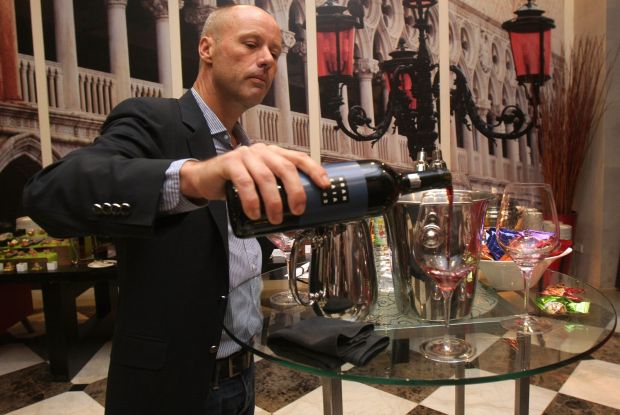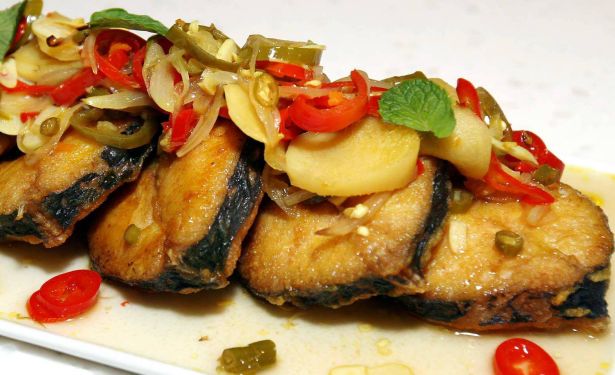WINE retailers and restaurateurs were given a preview of Brancaia, one of the latest Tuscan wine labels to hit Malaysian market.
The event organised by importer Straits Wine Company took place at Le Méridien’s Favola restaurant recently.
It was also attended by Martin Kronenberg, who runs Brancaia’s distribution.
If the owners’ names sound unusual given that Brancaia is an Italian label, that is because Kronenberg and his wife Barbara Widmer-Kronenberg are both from Switzerland.
They are the second generation Brancaia vintners after the estate was revived by Barbara’s parents in the early 1980s.
The tasting-session consisted of vintages harvested from Brancaia’s different vineyards with four main vintages, the easy-drinking Tre, Chianti Classico, Ilatraia and the label’s own Super Tuscan — Il Blu.
Starting off with the Tre from 2009, the wine consists of a blend of 80% Sangiovese, with 20% Merlot and Cabernet Sauvignon, hence its name is taken from the Italian equivalent of “three”.
In addition, the grapes also come from Brancaia’s three estates in Castellina, Radda and the coastal estate of Maremma.
Matured in 500 litre tonneau barrels, this means less surface contact with the oak interior and softer tannins as a result.
According to Kronenberg, the wine makes for easier drinking for those new to the Brancaia label, and works great as an aperitif or even accompaniment for most pasta dishes and even white meat.
 Brancaia’s “Il Blu”Super Tuscans : The vertical tasting session had guests sampling bottled vintages from the early ‘90s all the way to 2008.
Brancaia’s “Il Blu”Super Tuscans : The vertical tasting session had guests sampling bottled vintages from the early ‘90s all the way to 2008.
The next vintage sampled was the Chianti Classico Riserva 2009, blended from 80% Sangiovese and the remainder from Merlot and grapes from the Brancaia and Poppi vineyards.
Aged in the barrel for 16 months and a further eight months in the bottle, this wine has much more character compared to the lighter Tre, and goes well with grilled or roasted meats as well as robust sauces such as puttanesca.
The next blended vintage — Ilatraia — is a surprise, considering the rest of Brancaia’s wines so far feature the Sangiovese grape heavily.
The Ilatraia, by contrast, is composed of 40% Cabernet Sauvignon, 40% Petit Verdot and 20% Cabernet Franc, almost all French varietals.
“We wanted to try something different with the Ilatraia, and to also show how Petit Verdot, which means “little green one” in French, tastes when fully matured.
“In Bordeaux, the Petit Verdot doesn’t have the chance to fully mature before it is harvested, hence its name. But under the Tuscan weather and especially along the coastal area where there is a lot of sun, the berries get to mature to full ripeness.
“The resulting blend from the Petit Verdot adds character and flavour to the Cabernet Sauvignon and Cabernet Franc. The result is a somewhat ‘feminine’ sort of drink, quite soft and elegant but with character,” said Kronenberg.
The showpiece for the session was arguably the vertical tasting of Brancaia’s flagship Il Blu.
Composed of 50% Sangiovese, 45% Merlot and 5% Cabernet Sauvignon, the wines are aged 20 months in French barriques and another year in the bottle before release.
The Il Blu vintages selected for the vertical tasting ranged as far back as 1994, to the most recent in 2008.
The Il Blue as a whole, contains a depth of complexity and intensity coupled with elegance.
Suitable for a quiet evening of appreciation on its own, this wine goes down well with dishes of robust flavours such as dark meats and fried game.
“Compared to the Ilatria, this is a more ‘masculine’ drink and when you decant it, you need to pour it with vigour to get the Il Blu breathing,” said Kronenberg.
The vertical tasting of the Il Blu was also a chance for Kronenberg and Brancaia to showcase the vineyards’ consistency despite poor harvests, such as 2002 when Tuscany was hit with early rains in August and September.
Despite the poor harvests, the 2002 Il Blu does live up to its Super Tuscan reputation, with strong tannins and hints of berries and leather.
“One thing to note about serving Super Tuscans, or any wine for that matter, is that our idea of ‘room temperature’ is skewed. We should be chilling them at a range of between 14°C and 15°C before serving,” said Kronenberg.





